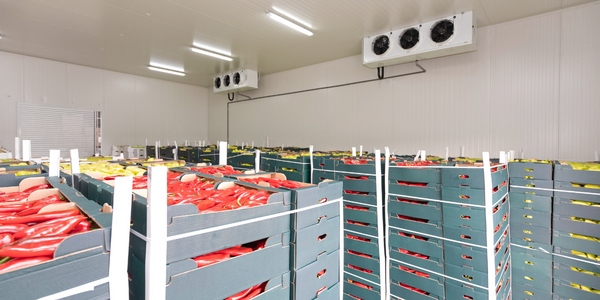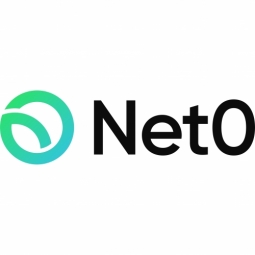Technology Category
- Platform as a Service (PaaS) - Application Development Platforms
Applicable Industries
- Marine & Shipping
- Transportation
Applicable Functions
- Logistics & Transportation
Use Cases
- Continuous Emission Monitoring Systems
About The Customer
Fenice Bulk is a Monaco-based shipping company that transports bulk commodities by sea globally. The company is known for its green shipping approach and values, and it aims to be a leader in sustainable shipping services. With the upcoming regulatory changes in the maritime industry, Fenice Bulk is committed to accelerating its decarbonisation journey. The company is proactive in its approach to meet the new regulations and is keen on partnering with sustainable commodity trading companies to reduce emissions and cut costs in future carbon credit trades.
The Challenge
Fenice Bulk, a Monaco-based shipping company, is faced with the challenge of meeting upcoming regulatory changes in the maritime industry. The European Commission has proposed the inclusion of the shipping industry in the EU’s carbon market from January 2023. This move will necessitate shipowners to purchase permits covering their emissions within the EU and a portion of their emissions from international voyages starting and ending in the EU. Given that the shipping industry accounts for nearly 3% of the world’s CO2 emissions, these regulations are expected to push shipowners to collaborate with sustainable commodity trading companies to reduce their emissions and cut costs in future carbon credit trades. Fenice Bulk, with its green shipping approach, aims to be an early adopter in sustainable shipping services. However, this requires the company to expedite its decarbonisation journey.
The Solution
To meet this challenge, Fenice Bulk partnered with Net0 to accelerate its carbon neutrality journey. The company plans to become carbon neutral by offsetting its scope 1 and 2 emissions through various carbon offsetting projects available on the Net0 Platform. Net0’s automated AI-powered emissions management platform plays a crucial role in this process. It allows continuous tracking, analysis, and reporting of emissions, thereby enabling the establishment of a robust and tangible future emissions reduction plan. This partnership with Net0 is a strategic move by Fenice Bulk to stay in line with the upcoming industry regulations and position itself as a leader in sustainable shipping services.
Operational Impact

Case Study missing?
Start adding your own!
Register with your work email and create a new case study profile for your business.
Related Case Studies.

Case Study
Airport SCADA Systems Improve Service Levels
Modern airports are one of the busiest environments on Earth and rely on process automation equipment to ensure service operators achieve their KPIs. Increasingly airport SCADA systems are being used to control all aspects of the operation and associated facilities. This is because unplanned system downtime can cost dearly, both in terms of reduced revenues and the associated loss of customer satisfaction due to inevitable travel inconvenience and disruption.

Case Study
IoT-based Fleet Intelligence Innovation
Speed to market is precious for DRVR, a rapidly growing start-up company. With a business model dependent on reliable mobile data, managers were spending their lives trying to negotiate data roaming deals with mobile network operators in different countries. And, even then, service quality was a constant concern.

Case Study
Digitize Railway with Deutsche Bahn
To reduce maintenance costs and delay-causing failures for Deutsche Bahn. They need manual measurements by a position measurement system based on custom-made MEMS sensor clusters, which allow autonomous and continuous monitoring with wireless data transmission and long battery. They were looking for data pre-processing solution in the sensor and machine learning algorithms in the cloud so as to detect critical wear.

Case Study
Cold Chain Transportation and Refrigerated Fleet Management System
1) Create a digital connected transportation solution to retrofit cold chain trailers with real-time tracking and controls. 2) Prevent multi-million dollar losses due to theft or spoilage. 3) Deliver a digital chain-of-custody solution for door to door load monitoring and security. 4) Provide a trusted multi-fleet solution in a single application with granular data and access controls.

Case Study
Vehicle Fleet Analytics
Organizations frequently implement a maintenance strategy for their fleets of vehicles using a combination of time and usage based maintenance schedules. While effective as a whole, time and usage based schedules do not take into account driving patterns, environmental factors, and sensors currently deployed within the vehicle measuring crank voltage, ignition voltage, and acceleration, all of which have a significant influence on the overall health of the vehicle.In a typical fleet, a large percentage of road calls are related to electrical failure, with battery failure being a common cause. Battery failures result in unmet service agreement levels and costly re-adjustment of scheduled to provide replacement vehicles. To reduce the impact of unplanned maintenance, the transportation logistics company was interested in a trial of C3 Vehicle Fleet Analytics.

Case Study
3M Gains Real-Time Insight with Cloud Solution
The company has a long track record of innovative technology solutions. For example, 3M helps its customers optimize parking operations by automating fee collection and other processes. To improve support for this rapidly expanding segment, 3M needed to automate its own data collection and reporting. The company had recently purchased the assets of parking, tolling, and automatic license plate reader businesses, and required better insight into these acquisitions. Chad Reed, Global Business Manager for 3M Parking Systems, says, “With thousands of installations across the world, we couldn’t keep track of our software and hardware deployments, which made it difficult to understand our market penetration.” 3M wanted a tracking application that sales staff could use to get real-time information about the type and location of 3M products in parking lots and garages. So that it could be used on-site with potential customers, the solution would have to provide access to data anytime, anywhere, and from an array of mobile devices. Jason Fox, Mobile Application Architect at 3M, upped the ante by volunteering to deliver the new app in one weekend. For Fox and his team, these requirements meant turning to the cloud instead of an on-premises datacenter. “My first thought was to go directly to the cloud because we needed to provide access not only to our salespeople, but to resellers who didn’t have access to our internal network,” says Fox. “The cloud just seemed like a logical choice.”







